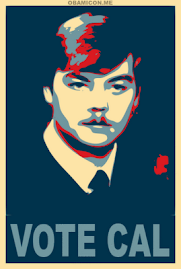
I have always been fascinated with the decades after the Civil War and before World War I. In so many ways the 'old world' was desperately trying to hold on to the status quo while social, industrial and economic changes swirled all around it. It took the carnage of the first World War to force change - change that was not always for the better. Immigration was altering the face of America but racism was especially strong. Whites fought harder than ever to resist black social advancement and a fear of change hung over everything. Neither government or the justice system seemed ready to make laws to the benefit of non-whites lest there be a heavy social backlash.
Like in Victorian England, sexuality was also repressed but was strongly represented in advertising and the arts. The so-called 'Gibson Girl', a model with specific features, became the standard of beauty. Girls with an hourglass shape, larger breasts and long hair put up were used to sell everything from soap to salt. The image was everywhere. Evelyn Nesbit (a radiant Elizabeth McGoveren) was a model who fit these features and posed for many artists in and around New York. She moved in high society circles and had affairs with many powerful and influential men - most notably Sanford White, a wealthy industrialist.

One of the film's many character streams involves the murder of White by Nesbit's husband Harry Thaw who was jealous of the man his wife had been with when she was still in her teens. It was rumored that a naked statue put up in New York by White was based on Nesbit's body. Of course this infuriated the unstable Thaw. He felt the statue was 'rubbing his nose in it'. In 1906 Thaw shot White dead in a crowded hall (Madison Square Gardens). The movie covers the two show trials that followed. In the early days of newspapers this was a tabloid scandal too hot to resist. The comparisons between now and then cannot be overlooked but it's interesting to see the work of tabloid journalism in it's infancy.
The set pieces are amazing as are the scenes of life at the time. From the immigrant communities of New York to the seats of power you get it all. Early automobiles run alongside horse drawn wagons.

Another major story tread involves Oscar nominated Harold Rollins Jr. as Coal House Walker. A black piano player who feels the sting of racial injustice as he tries to rise above his station in life. He is incensed at the way he is treated by the police after his car is damaged by a group of racist firefighters. How he deals with what happens to him provides much of the drama of the film and sets up the contrast between how rich and poor was the dividing line in this new Century America.

The movie moves at a luxurious pace and you can just relax into it and enjoy this period piece. There are too many recognizable stars to mention them all but they include James Cagney as the police chief of New York in what is commonly believed to be his last movie role. Booksteve reminded me that this was not so. It was great to see him regardless. Other stars include Pat O'Brian, Mary Steenburgen, Mandy Patinkin, Jeff Daniels, Samuel L. Jackson and even Jack Nicolson who is listed as 'pirate on beach'. The film was nominated for eight academy awards include Rollins as best actor. It only won one for costume design. It's interesting to see how all these different posters highlight different facets of the story.


































































































%20SDTB.jpg)











2 comments:
I love RAGTIME, too, and have long been surprised that it has largely faded from our collective moviegoing memory. In the interest of accuracy, though, I must point out that Cagney didn't die soon after as you state. Actually he lived several more years in reasonably good health and even made another film, the 1984 TV movie TERRIBLE JOE MORAN with Art Carney and Ellen Barkin. His voice was weak enough that it had to be redubbed by an impressionist but his sparkle was still there and he gave quite a good performance in a sentimental script about an old boxer!
I knew you would know something that I missed. I always assumed and its the common misconception that he did die soon after this movie was released. Thanks for the fix.
Post a Comment